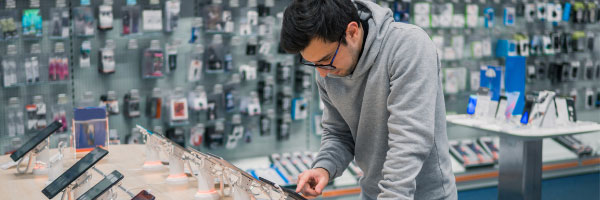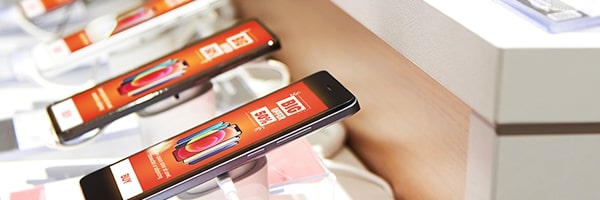What Does “Phygital” Mean for Wireless Carriers?
Integrating physical and digital tools was already well underway as 2019 drew to a close. By then, airports had installed self-service kiosks that empowered passengers to check their baggage before approaching the counter, and restaurants were experimenting with digital orders from on-site tablets and kiosks.
Lifestyles underwent a dramatic transformation in 2020, prompting consumers to seek new ways to complete routine tasks without spending too much time in brick-and-mortar establishments. Businesses responded with contactless payments, curbside pickup, and expanded delivery options.
In other words, the world went “phygital” as the entire retail industry increased opportunities for consumers to combine their physical and digital experiences. The trend is so popular that most businesses are seeking to expand phygital services, even as life gets back to normal in many areas of the country.
Why Consumers Love Phygital Services
Basic phygital services emphasize convenience for consumers by saving them time and reducing the need for in-person interactions. However, convenience is just the beginning for transforming the customer experience with phygital technology.
Consumers are getting more comfortable integrating digital technology into their daily physical routines, which has encouraged greater use of devices that rely on virtual and augmented reality. For example, consider the smashing success of Peloton over the last two years. The biggest selling point isn’t the physical apparatus — it is the virtual world/community users enter when they ride their stationary Peloton bikes.
As 5G becomes widely available, the seamless integration of the physical and digital worlds will only accelerate as truly mobile use cases proliferate and become commonplace. In fact, consumers are also coming to rely on the immersive experience that phygital services offer. While we are still in a transitory period as far as phygital is concerned, consumers in many physical environments already expect digitally-rich experiences. This trend will only pick up momentum as the 2020s continue.
The Benefits of Phygital for Retailers
Fortunately, retailers gain distinct advantages from a successful phygital strategy, so meeting customer expectations is a win/win. Every digital payment and self-service transaction increases operational efficiency and produces a wealth of behavior-based data. In other words, retail associates can focus on analytics-informed tasks that add value directly to the bottom line.
Better still, phygital services strengthen and deepen customer relationships. Immersion in the world of a particular product or brand creates habits that lead to repeat sales, referrals, and long-term loyalty – there’s no need to look further than our previous Peloton example to see how this phygital strategy directly translates to revenue.
Translating Phygital for Wireless Carriers
Wireless retail stores are uniquely positioned to benefit from the growing consumer preference for phygital retail experiences. For example, the use of electronic shelf labels in brick-and-mortar stores reduces labor-intensive manual tasks for store team members, giving them more time to deliver a high-quality customer experience.
With phygital, wireless carriers can deliver consistent omnichannel experiences between online and in-store. When customers start their journey online, they can count on receiving the same promotions and prices in-store. Because “smart” demo devices are already plentiful in wireless retail environments, carriers can make the most of phygital engagement opportunities to attract customers in new and appealing ways, such as with virtual product tours and product-finder capabilities that connect shoppers with the items that best meet their needs. The right connection, in turn, increases the likelihood of a sale.
Getting Phygital with ViewSpot®
Smith Micro’s ViewSpot platform is designed to help wireless carriers and other smartphone retailers transform physical retail spaces into immersive, digitally-rich experiences by harnessing the largely untapped power of in-store demo devices such as smartphones and tablets. With ViewSpot installed on these devices, wireless carriers can:
- Engage in-store shoppers with synchronized “attract loops” and compelling on-device video promotions;
- Easily customize and optimize on-device content to align with specific marketing campaigns and/or regional goals;
- Incorporate touchless demo device interactions into brick-and-mortar environments;
- Optimize retail operations and in-store promotions with behavior-based insights.






